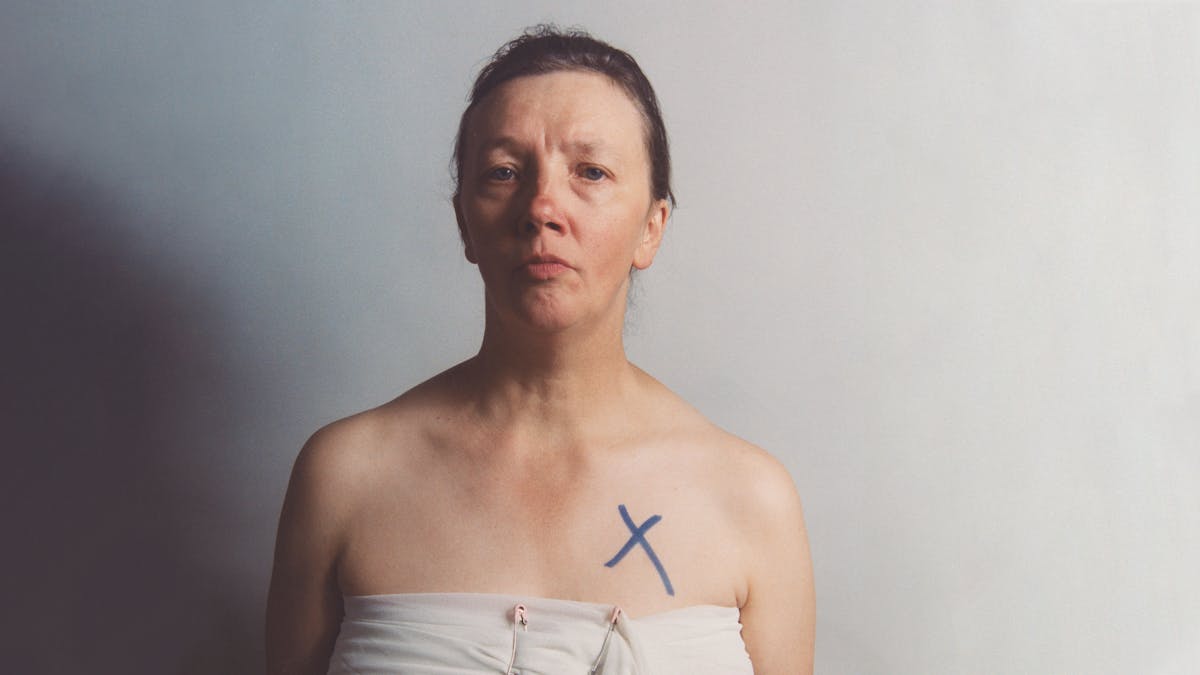How could a camera help us when we’re sick? In the 1980s, Jo Spence put cancer in the viewfinder to capture how politics influences our experience of illness. Today, Oreet Ashery uses video to expose how companies try to profit from our pain. Art historian Giulia Smith explores how each artist creates work that’s playful but packs a political punch.
When you’re sick, you might feel that politics is the furthest thing from your mind. For most of us, it’s impossible to keep a critical attitude in the face of a debilitating condition – you’re simply too exhausted. And who can care about politics at times of intense grief?
But some artists, like Jo Spence and Oreet Ashery, have used their work to not only cope with such experiences but also to connect them with broader issues – like pollution and gentrification, for example – that disproportionally affect those who are most vulnerable in society. The medical definition of phototherapy involves using ultraviolet light for therapeutic purposes, but Spence and Ashery use cameras for another type of therapy, where they bring out what ails them, and society more broadly, in their images.
In 1982, Spence was diagnosed with breast cancer. She had trained as a commercial photographer and after her diagnosis, she used photography as both a soothing activity and a way of documenting what she saw as the failures of the medical establishment.
More: Photographs, and how people are presented in them, can impact health and survival.
At the time, very little information was available about alternative cancer therapies, nor was there an effective system in place for supporting patients with counselling. The focus was almost exclusively on prescribing drugs and performing surgery. When Spence requested a lumpectomy instead of a mastectomy (opting to have the cancerous tissue removed rather than the entire breast) her doctors were dismissive and patronising, though in the end they did as she asked.

Property of Jo Spence?
On the eve of the operation, she created a self-portrait with the words ‘Property of Jo Spence’ inscribed on her left breast. Even when put under anaesthetic, this patient would continue to protest, the image seems to be saying. For me, it perfectly encapsulates the feeling of wanting to retain your identity even as you surrender to your doctors. They may have jurisdiction on your body, but your personality – your sense of humour – remains yours.
From 1983, Spence worked with Rosy Martin to perfect what they called ‘phototherapy’, using the camera ‘to promote self-awareness and healing’, as Martin said in a 2001 article in the journal ‘Afterimage’. With the help of another photographer, Maggie Murray, they re-enacted social stereotypes that closely related to their identities, with the aim of exorcising them.
The importance of openness
Spence often returned to the image of the cancer patient as a helpless victim. In open defiance of this cliché, she chose to be photographed by Terry Dennett, a close friend and collaborator, wearing nothing but her post-op scars and a badass motorbike helmet.
Spence also documented her experience of living with cancer (including her self-devised health regime) in a series of ‘illness diaries’. At least two bodies of work came out of this material: ‘Cancer Shock’, a photo-novel from 1983, and ‘The Picture of Health?’, an expansive series of photomontages realised between 1982 and 1986. According to Dennett, working on these projects was ‘an integral part of her broader alternative and complementary cancer treatment programme’, on a par with having acupuncture and following a diet heavy on raw juices.
But Spence was concerned with more than her own recovery. She wanted to change the narrative of an illness that was so deadly it was considered a social taboo. ‘The Picture of Health?’ was turned into a series of laminated posters that could be loaned out to community centres and libraries to get people talking about something they had been too afraid to discuss.
The Picture of Health

The Picture of Health. In celebration of a lousy day.
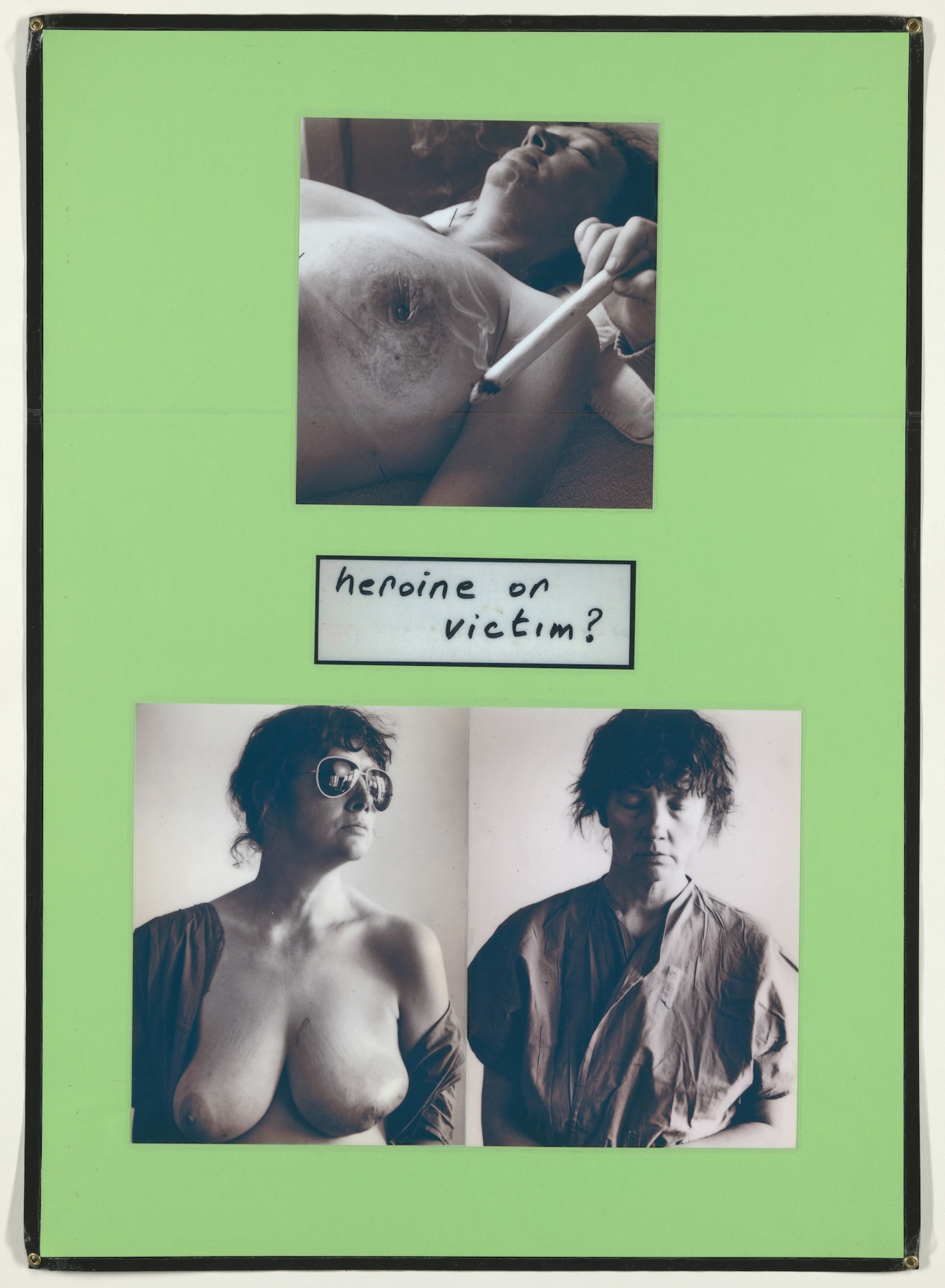
The Picture of Health. Heroine or victim?
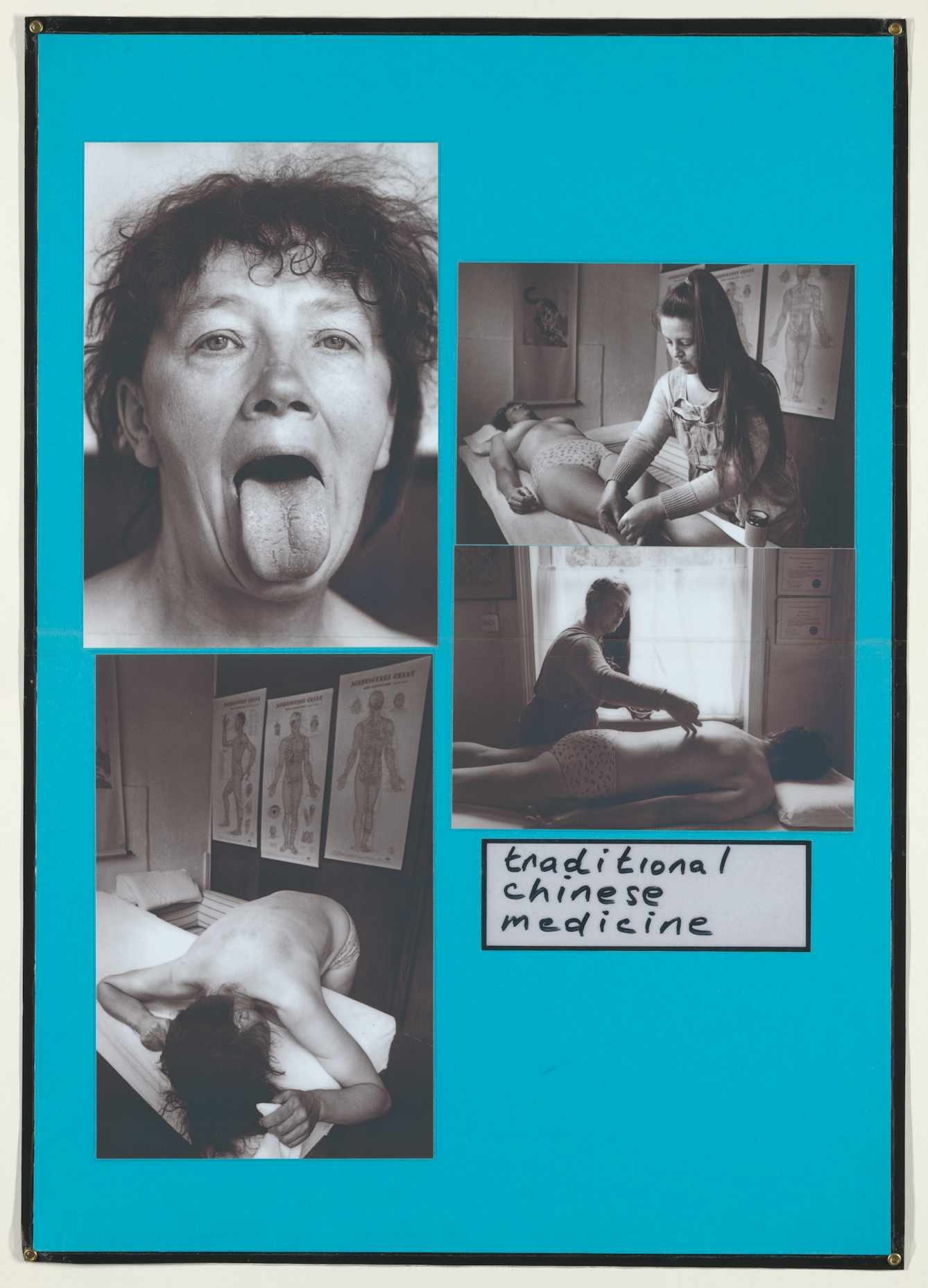
The Picture of Health. Traditional Chinese medicine.
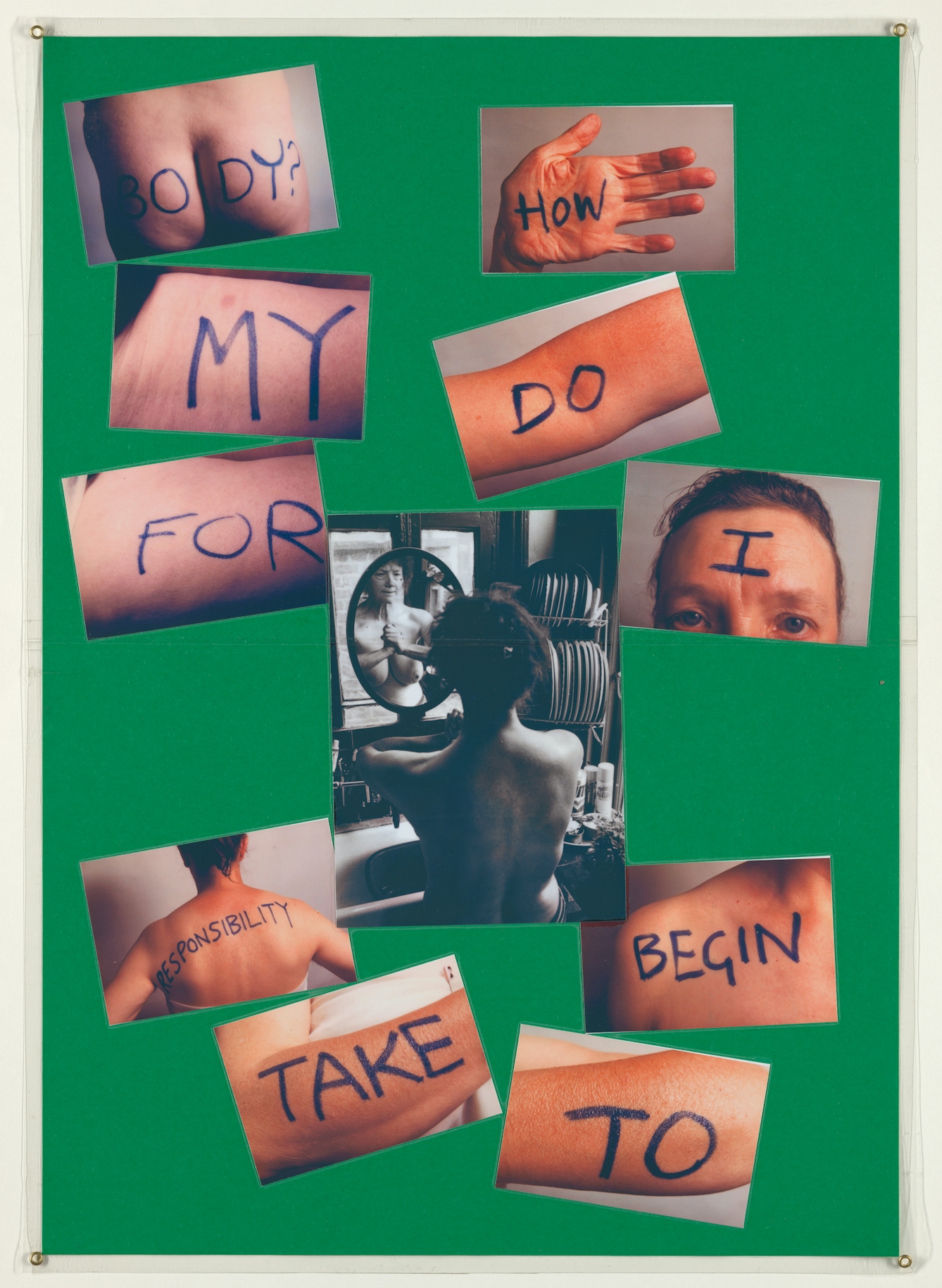
The Picture of Health. How do I begin to take responsibility for my body?
The posters consider the reality and the hidden roots of an illness like cancer, commenting on the ill effects of pollution, poor diet and economic deprivation. These connections may seem obvious now, but they weren’t at the time. Like many other illnesses, cancer was (and sometimes still is) seen as an individual condition brought on by a combination of hereditary factors and personal lifestyle choices. Spence believed that capitalism was as much to blame as genetics.
Spence eventually recovered from breast cancer. Then, tragically, she succumbed to leukaemia only a few years later. Her ‘Final Project’ (1991–92) deals with death with a mixture of levity and melancholy. One of the last images in the series layers a picture of a rural landscape with one of Spence floating in water. Straddling the line between the real and the otherworldly, her final self-portrait marks a move away from the political activism of the previous years, but not from the idea that photography could serve as a powerful witness and a healing technology.
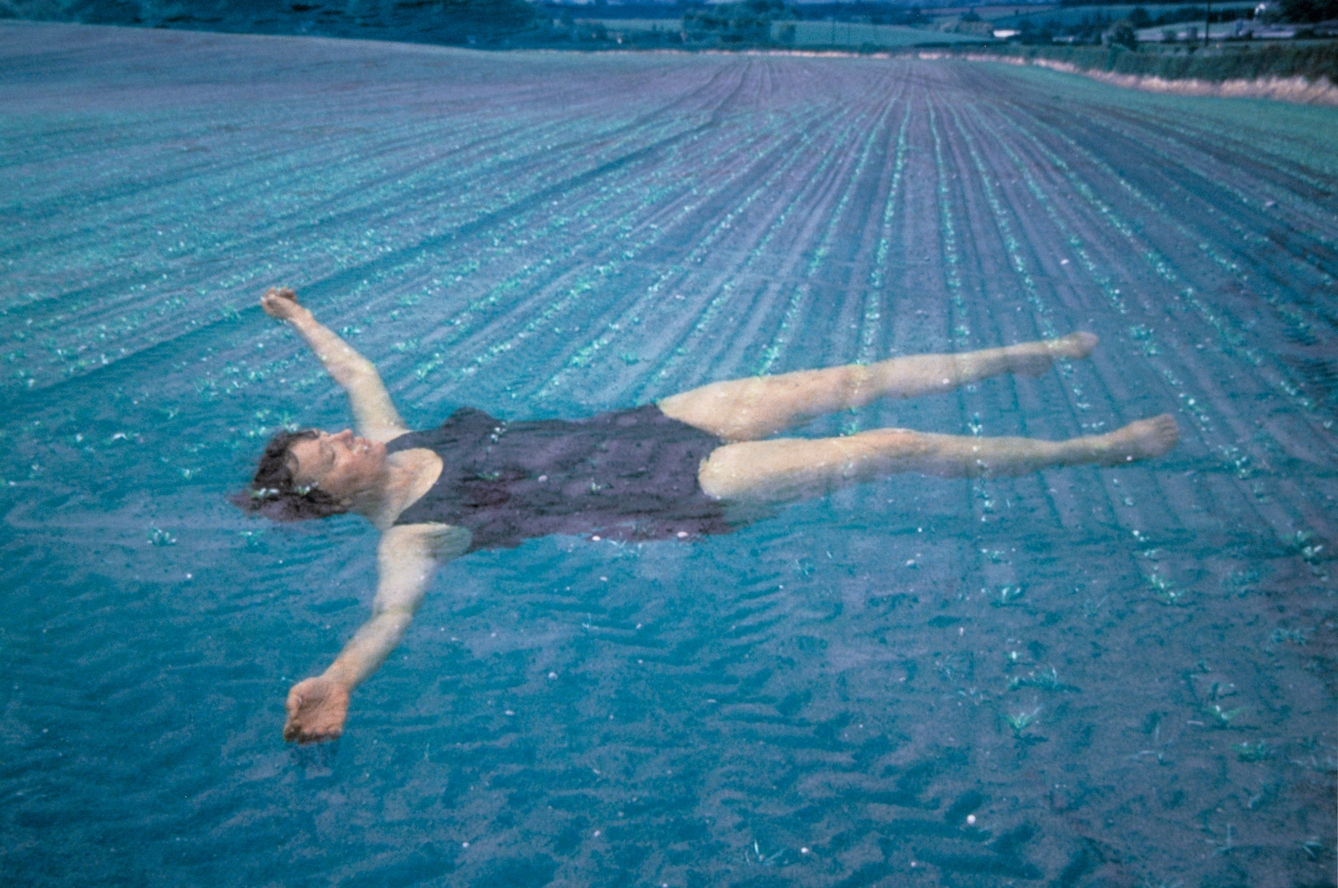
The Final Project.
Love, loss and death
Oreet Ashery first encountered Spence’s work when she was still at school, and the discovery was important enough for her to make a note of it in her diary. Like Spence, Ashery was shaped by the feminist notion that ‘the personal is political’.
For Ashery, the personal experience of the death of her father inspired her to create art that comments critically on how we, as a society, deal with private experiences like dying and caring for people who are ill. Her project ‘Revisiting Genesis’ (2016) explores themes of mortality and grief in the form of an online miniseries made up of 12 short episodes.
Ashery’s father is not mentioned and instead, the focus is on a fictional character called Genesis, who is suffering from a mysterious and fatal condition. We never actually see Genesis in the series (disappearance is one of their symptoms) but the rest of the cast is composed of professional actors mixed in with real patients living with terminal illnesses, one GP, two nurses, and several of Ashery’s friends. For me, this is what makes the series so compelling, both as an artwork and a testimony.
Though we never see Genesis, we learn about their life. For example, we discover that Genesis arrived in Leicester in the late 1980s as an immigrant. This relates directly to Ashery’s biography and past work. ‘Revisiting Genesis’ makes us think about whether our healthcare is truly universal at a time when the NHS is being used (and abused) to prop up the rhetoric of far-right nationalist campaigns.
Revisiting Genesis
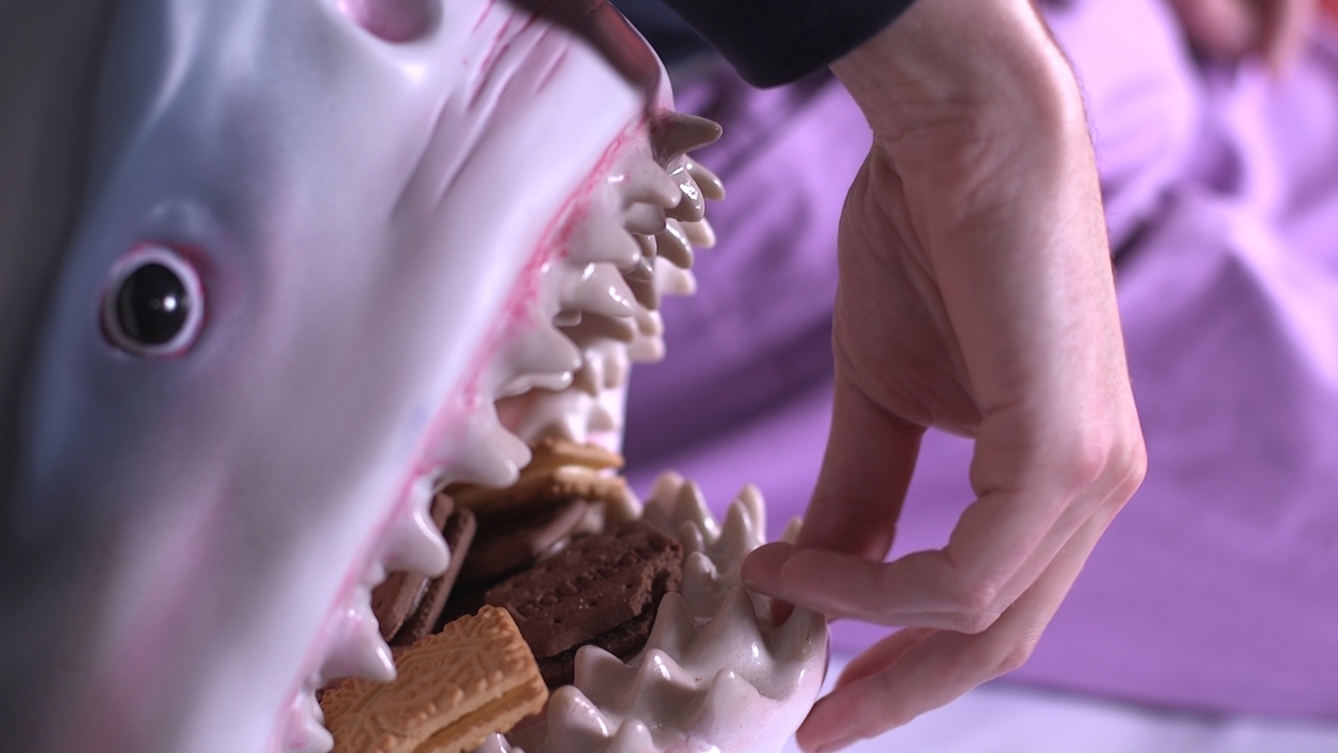
Episode 3: Cushions, Digital Will & Foot. 2016.
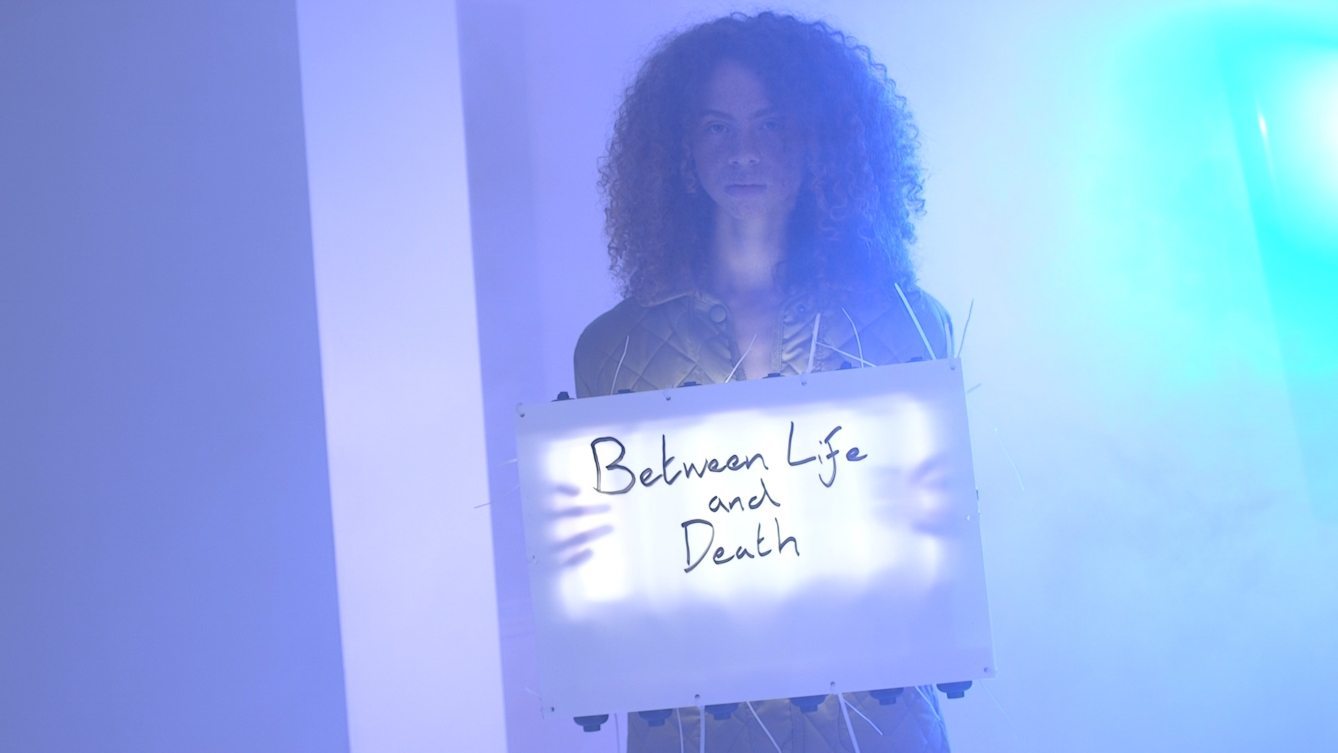
Episode 4: M&S Cake Factory, Swindon. 2016.
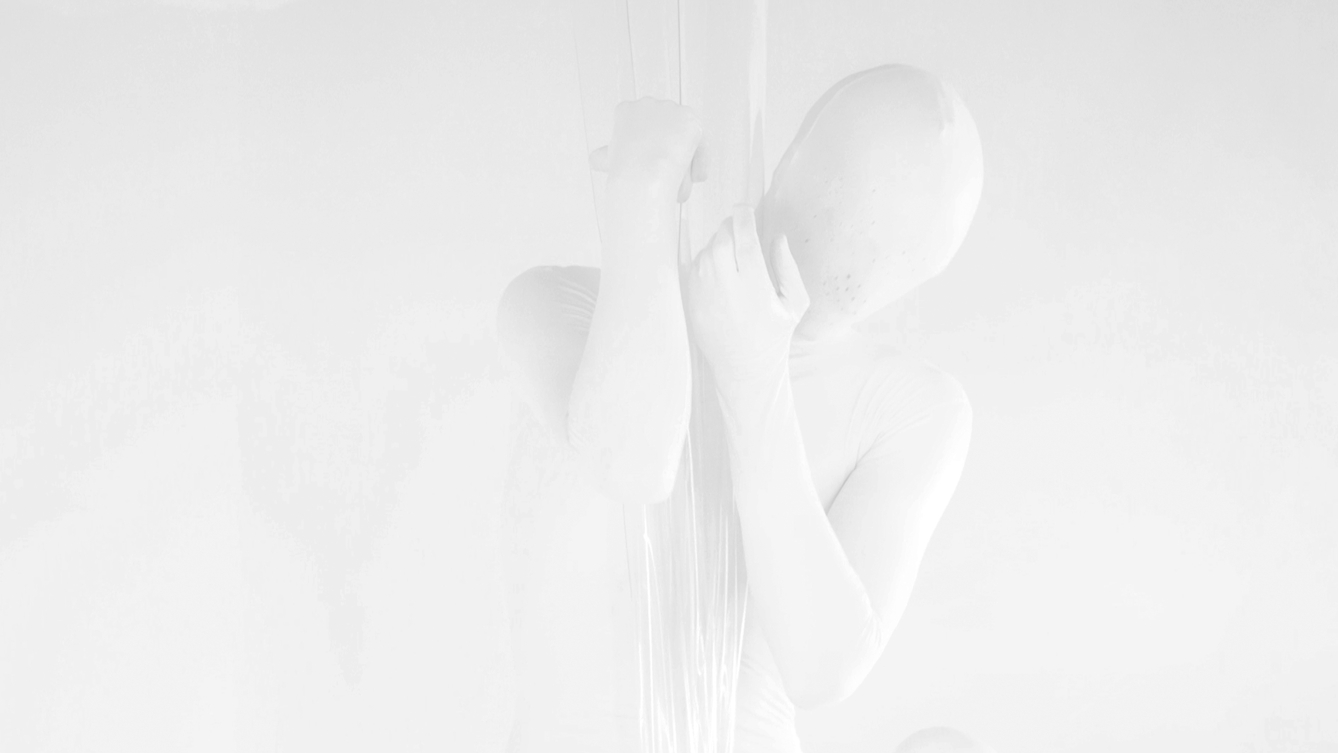
Episode 12: Prayer, Aerialist. 2016.
Gentrification is another key theme. We learn that in Leicester Genesis studied dance and drama at Charles Keene College. We also learn that this institution no longer exists, due to 20 years of accelerated property speculation. It is not only Genesis that has disappeared, but their past too.
The decimation of places echoes the loss of loved ones. From community centres to art spaces and film co-operatives, these are the venues upon which Spence relied for her activities as a self-defined ‘cultural sniper’ years ago. If she struggled to make ends meet in the economic climate of the Thatcher years, what would she have done today, when the custom of clamping down on unprofitable activities is so much more entrenched?
Monetising death
Throughout ‘Revisiting Genesis’ we keep hearing about the therapeutic benefits of ‘the slideshow’. Gradually, it becomes clear that this is both a surreal fiction and exactly what it sounds like: a visual presentation made up of digital images chosen by a dying patient in preparation for their death.
As it turns out, the slideshow is only one of many products offered by the digital afterlife industry, a booming market sector whose merchandise ranges (and this is no fiction) from barcode-activated gravestones to AI avatars trained to replace you on social media. As distasteful as it may be, the truth is that today death and dying have become highly marketable realms, just like property development.
As distasteful as it may be, the truth is that today death and dying have become highly marketable realms
Spence took aim at ‘absences and silences’ that stopped people from feeling like they could talk about cancer, whereas Ashery’s work deals with being bombarded when our loved ones are sick, often by companies trying to make money.
But both speak about the power and breadth of love. Genesis is cared for by a queer network of concerned friends who are, by and large, resistant to digital messages calling them to spend money on superficial things. Similarly, Spence’s many collaborations show what it can mean to face illness with the support of a community of comrades and companions, instead of relying on the assistance of biological relatives.
‘You die how you live, only more’, go the lyrics of the song played in the last episode of ‘Revisiting Genesis’. If you defy convention in your day-to-day life, it follows that you will approach sickness and death with the same outlook, ‘only more’. Not everyone can live up to this expectation, though. That’s why I am so inspired by Spence and Ashery and the way they use a camera to make points about politics that go beyond their own pain.
About the author
Giulia Smith
Giulia Smith is a Leverhulme Early Career Research Fellow at the Ruskin School of Art, University of Oxford.
